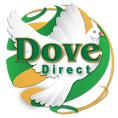Time to Reimagine Media Engagement
Quote of the Day: "The average human attention span was 12 seconds in 2000 and 8 seconds in 2013—a drop of 33%. The scary part is that the attention span of a goldfish was 9 seconds, almost 13% more than us humans. That's why it's getting tougher by the day to get people to turn the page. Maybe we writers ought to try writing for goldfish! — Ashwin Sanghi
Diminishing Attention Spans
The marketing and media industries focus on capturing attention spans and converting them into engagements, ideally turning them into brand loyalists or elevating prospects into paying customers. Not only has ad trust been decimated to an all-time low, but as a result, it's also a time of the highest level of ad disengagement and consequently the weakest return on ad investment in history.
In a sense, the modicum of ROI is being whittled away with the law of diminishing returns, leading to decreasing attention spans. Author Faris Yakob explains, "We haven't left time for ourselves and are seeing now a counter-brand of digital detoxing and mindfulness."
Attention is Earned, Not Given
Earning consumers' attention is where marketing objectives need to focus more on. Instead of just bombarding consumers with the last or latest sale offer, gaining attention should be a customer-centric model. Remember the old marketing adage, "The customer is always right."
In the sense of reestablishing attention span numbers, marketers should also be looking at the customer-centric view of media and any human factors that best influence receptivity. Primarily, the first step is to acknowledge that there is an interesting problem. People shy away from interruptions in today's compressed world, including noise and intrusive ads that direct them from what truly interests them.
Content and the media environments within which content resides have a significant role in capturing and improving attention spans. When targeting and interests align, the resulting content that is practical in that context will improve both relevance and ad attention. This idea is not exactly new. It's just that the onslaught of the cookie era has moved this idea to the back burner. As we see that cookies are entering the deprecated state, along with more niche market fragmentation occurring across almost every channel, it now makes sense to target consumers' interests with content that matches that context. As a result, this consumer interest model will invariably raise and improve ad attention, employing a wider reach, with the greater intent of personalization.
Audiences Require Priming
Quality painting usually requires painting a primer layer so that the intended final color will adhere to the surface correctly and not compete with old colors already there. Similarly, priming a target audience is required before entering the active information or purchasing journey. Yes, personalization is relevant, but the marketing world has been sidestepping the priming process and instead opting to relapse into intent-based targeting and performance metrics.
You can also view priming as brand building, which is where brands rise to the top. Brands that can make emotional connections designed to inspire, surprise, envoke, and align with people's values, interests, and concerns, is where priming precisely happens.
Paid, Owned, and Earned Media
Diversifying and integrating channels across paid, owned, and earned media improves the capability to scale attention spans. Even though earned and owned will fall short of replacing paid media outcomes, equal consideration should be on the table regarding how earned and owned interact with paid initiatives. A mix of all three is instrumental when it comes to categories.
Walled Gardens
A walled garden refers to the environment that controls user access to web content and services in the internet world. Therefore, one can view a walled garden as an entity that pushes or restricts the user's navigation to particular areas, allows access to a selection of material, or prevents access to other material. Many believe the Facebook model is an apt representation of a walled garden.
That said, in reference to attention, walled garden models are slowing down. As a result, this process will increase the cost of advertising while simultaneously causing diminishing returns. If brands are to grow consumer attention, they must be willing to step outside of these walled gardens.
Believe it or not, roughly 79% of ad dollars are invested in them, while 67% of digital consumer engagement takes place outside the walled garden environments. The lure for marketers is the ease by which ad management can occur in walled gardens, as opposed to the quality of the environment.
The Net-Net
These short snippets regarding the idea of reimagining media engagement is just the tip of the iceberg. One of the engagement processes we need to rethink goes beyond digital walled gardens. Media is now more complex and growing, and consumers are evolving in line with technological advancements. Paying media will still be a factor, but it pales without the earned and owned media initiatives, creating a critical influence in raising marketing share. First-party data in combination with media partnerships will improve relevant context and provide a course to exit the confines of the walled gardens approach. Thanks for stopping by and reading "Time to Reimagine Media Engagement!"
Let's talk about integrated business solutions and how they can move your messages forward, help grow your business, change behavior, and improve the customer experience. Let us show you how to improve your document processes to optimize your workflow, reduce costs, and maximize your organization's printing, letter shop, and mailing capabilities. Dove Direct has an official USPS certified bureau located within our offices to save you time and money. We can even create a demo file for you. For more information, please call Carla Eubanks at 404-629-0122 or email Carla at This email address is being protected from spambots. You need JavaScript enabled to view it..
Dove Direct, your Atlanta vertical integrated print and mail solutions provider, offers organizations end-to-end data, printing, and mailing solutions:
- Data Management
- Variable Digital/Data Printing
- LetterShop and Fulfillment
- Digital Mail Scanning Services
- Fully Automated MLOCR Presort Bureau
- Marketing and Production Management Support
- Secure Data Life Cycle Management
If you don't want to wait, you can reach Dove Direct today by calling 404-629-0122 or completing the Contact Form.





